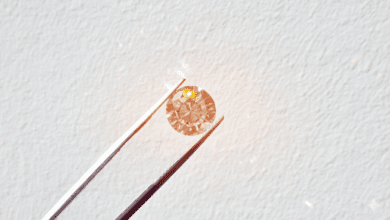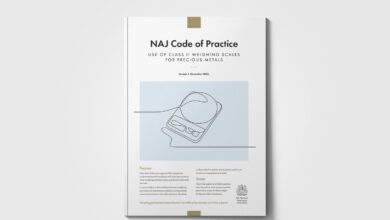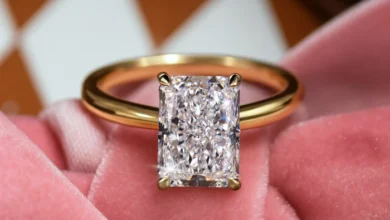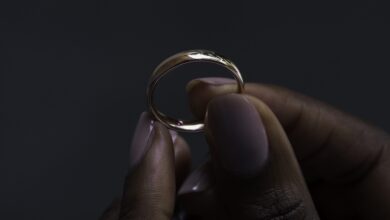Best practices in selling jewellery: Common Sense
The way we interact with our friends and families is immeasurably more natural - and amenable - than with customers. This, argues resident columnist Leonard Zell, is where some common sense must be applied to get the customer onside

Register to get 1 free article
Reveal the article below by registering for our email newsletter.
Want unlimited access? View Plans
Already have an account? Sign in
One of the first rules I teach salespeople is: “If a technique doesn’t make sense, don’t use it.” This sounds easy enough, because most of my students think the way they sell does make sense. That is, until I point out examples of techniques they have been using that make no sense.
Then you should see how interested they become. “So what?” I tell my students. “No one is perfect in selling and therefore we all make mistakes.” The fun of selling is to see theimmediate increases in your sales when you correct these mistakes.
We wait on a customer for 15 minutes to an hour. The customer has no idea who we are and we don’t know who they are. Rather than using their name, we address them with an implied, “Hello sir.” When do we find out their name? When we get their credit card. When does the customer finally know our name? When they are ready to leave with their purchase – and maybe not even then. How much sense does that make?
This should sound familiar to you. “Here is my card Mrs. Smith, come back and see me again.” Why would she when the implication was, “Now that you bought something from me I’ll tell you who I am.” Or if we had trouble closing the sale and we bring out what I call the ‘give up’ card. “Let me put this information on the on the back of my card.” That is even worse because we never found out who the customer was. There was really no introduction, just the passing of a piece of paper imprinted with our name – we left our financial destiny in some stranger’s hands by hoping they would come back.
To show you how widespread this is in all types of retail, when was the last time you were in a retail store and a salesperson introduced themselves to you, used your name selectively throughout the sale and remembered it at the end? Every jeweler should ask themselves and their salespeople: “If your customer doesn’t know who is trying to sell them a diamond, how can they trust that salesperson?”
Walk into any jewellers and observe where the salespeople are looking when showing a piece of jewellery. It won’t be the customer’s eyes. It will be the jewellery. The salesperson’s head is down talking to the jewellery as if it had ears. The customer is also looking at the jewellery and neither of them are looking at each other. What sense does that make? How do they expect to gain their customer’s trust if they don’t look up at their eyes? Now go back to your store and you will probably see or do the same thing.
Then ask your salespeople this question: “Why is it when we are at home conversing with our friends we look up at their eyes, yet in the store when our living depends on it,we do the opposite. We look away our customer’s eyes and talk to the jewellery. Does this make sense to you, is this treating your customer as a friend?
While still in your store watching your salespeople, observe how many are smiling with enthusiasm when greeting customers and showing them jewellery. Most jewellers say they don’t see enough of it. The truth of the matter is that very few salespeople greet customers with the same friendly smile and enthusiasm as they would a friend in their home. When their livelihood depends on it, salespeople have trouble remembering to smile and be upbeat. How much sense does that make, not to greet customers with the same enthusiasm as we do our friends?
When I ask salespeople if they feel more comfortable with a customer when they come in for the third time then the firts time they all say, yes. Then I ask them: “How much sense does that make for customers to come into your store three times before you greet them with an enthusiastic smile?” Jewellers forget to keep reminding their salespeople that jewellery is bought for occasions of happiness and joy, so why aren’t we smiling more? Where is our enthusiasm? Throughout my 25 years of sales training throughout the world, one thing is certain. The salesperson with an outstanding smile and enthusiasm always outsells the others in their store regardless of their product knowledge.
Take another look and you may see one of your salespeople who just completed a sale saying goodbye to their customer, “Have a nice day.” The customer stops on the way out because their eye caught something in one of the front showcases. You look back at the salesperson, but they are too embarrassed to approach their customer again because they already said goodbye. Another salesperson approaches that customer and makes a sale. The first salesperson complains: “That was my customer!” Owners as well as salespeople make this same mistake. They assume that when a customer comes into their store they have seen everything and therefore it is not necessary to call their attention to an additional piece of jewellery. They also assume that their customer has no further interest in purchasing more than what they just bought. Does this make sense to you, not even attempting to create an add-on sale?
Why do your salespeople seldom think of trying add-on sales, even when their customers are looking in the showcases as they are leaving the store? That certainly makes no sense. Why aren’t they pointing out other pieces of jewellery, to catch their interest, while walking their customers to the entrance of the store, instead of staying behind the counter and saying, “Have a nice day.” When friends are leaving our home we always walk them to the door. Shouldn’t we do the same professionally?
And finally, why do we interrogate customers when they come into the store? We never do that to our friends when they come to our home? It bothers us when we go to a shop and we get hit with all of these questions: “What can I do for you today? How can I help you? What can I show you? Is this for you or someone else?” And the most demeaning of them all, “How much do you want to spend?” When we get back to our store, what do we do? We ask the same questions.
Which allows me to conclude neatly on two of the seling tips I offer most often: “Always sell the same way you would like to be sold,” and, “treat your customers the same way you would a friend in your home.” If you do, your sales will greatly increase. Using common sense always makes more cents. (Pence, for we British, Ed.)







